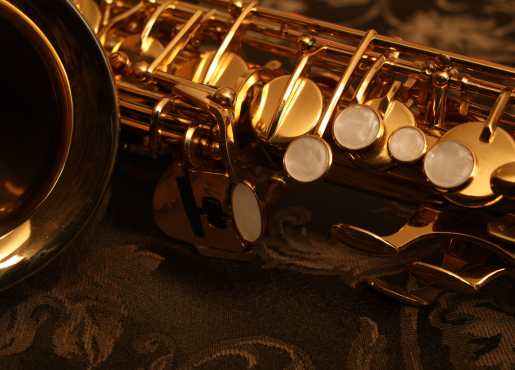
Discovering John Coltrane Again
By Kim Kleinman, Contributing Writer
In his Sept. 13 blog post, titled “An Apex of Innovation,” Fritz shared a few of his thoughts about the recent release of “Evenings at the Village Gate,” a live 1961 recording of John Coltrane with Eric Dolphy, along with the pianist McCoy Tyner, the bassists Reggie Workman and Art Davis, and the drummer Elvin Jones. It’s an important release and well deserving of the attention Fritz gave it on Jazz Spectrum and Jazz Spectrum Overnight and no doubt will again.

I too am giving it a serious listen, just as I did with the 2018 release, “Both Directions at Once,” a lost recording from 1963 by the seminal quartet of Coltrane, Tyner, and Jones, with the usual bassist, Jimmy Garrison. In his liner notes, Sonny Rollins said the release was “like finding a new room in the great pyramid.” This new album is an even greater treasure, and any opportunity to listen to Coltrane and this band again is welcome.
I confess though that it isn’t easy for me to listen to Coltrane. He is just too good and too important and thus only to be savored on occasions more special than the particular one I happen to be in. There are believers in San Francisco’s Church of St John Coltrane. I am not one, but I suppose I recognize that the relics—especially THE Quartet and the Impulse recordings—are to be protected and treasured.
It was in a spirit of enquiry and wonder that last April I surveyed the Coltrane albums NOT on Impulse. I knew “Giant Steps” on Atlantic and the sole Blue Note album “Blue Train” but I saw them as, in their own way, hems of the sacred garments. The Atlantic “My Favorite Things” is quite fine and also includes a wonderful version of “Every Time We Say Goodbye,” but I have too often thought “Wouldn’t it be better to find a version with Jimmy Garrison and not Steve Davis?” And great as “Blue Train” is, why does he have to share the front line with Lee Morgan and Curtis Fuller?
My April survey showed me my foolishness on these and other matters, and I now have a better sense of John Coltrane as a gigging musician, sometimes a sideman even, scrambling for recording dates, to have a band for every gig, and to have material when the revered recording engineer Rudy Van Gelder hit play and the red light was on in the studio. I also see the legendary style develop with some inevitable missteps and growing pains. I begin to see him as just another tenor player, albeit a very good one, who played with his worthy contemporaries—Red Garland, Kenny Burrell, Freddie Hubbard, Donald Byrd, Tommy Flanagan, Paul Chambers.
The “Prestige ‘58” collection is extended exhibit A, putting “Soultrane,” the only album actually released in 1958, with other dates Coltrane led in that year—eventually titled as “Standard Coltrane,” “Stardust,” “Bahia,” and “Dakar”— but that weren’t released until after he was THE John Coltrane, on his way to the distancing reverence. It’s a chance both to experience his music develop in real time and to reflect on the trajectory of his career.
I also treasure getting to know “Ole” from the Atlantic years and to see how widely he was listening early. That Spanish/Moorish/North African music was in the mix anticipates the Indian sounds that informed “My Favorite Things” and those that served as an impulse behind “Africa/Brass.”
In any case, these are some wonderful albums, well worth listening to, without the burden of too much reverence. And that makes them even better.
- Home
- Schedules
- TV
- TV
- Local TV Programs
- Business | Life 360 with Kristi K.
- Toledo Stories
- To The Point with Doni Miller
- Listening with Keith Burris
- Ideas & Insights
- WGTE Presents
- BL360: Northwest Ohio Innovation Consortium
- Magic of the Old West End
- Freedom Means Never Surrender
- I&I: The Random Factor
- FF: National Cherry Festival
- TTP: Moms Demand Action For Gun Sense in America
- Watch Live
- Radio
- Education
- Community
- Support
- About
- Donate



